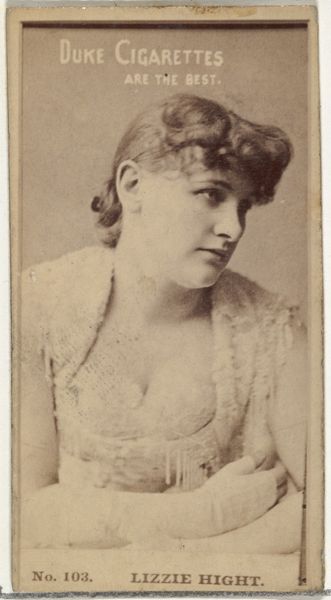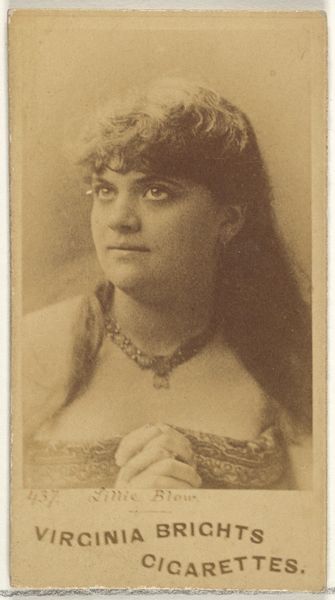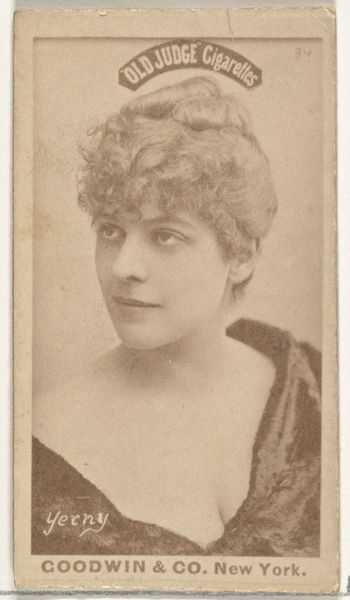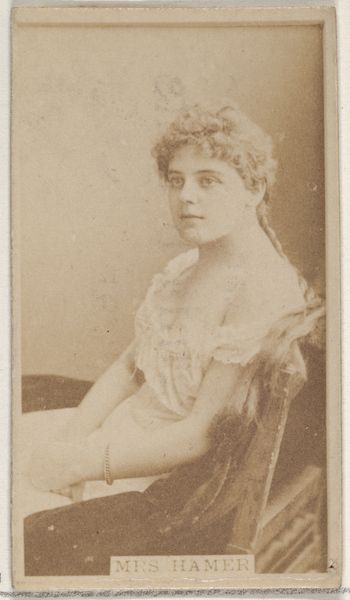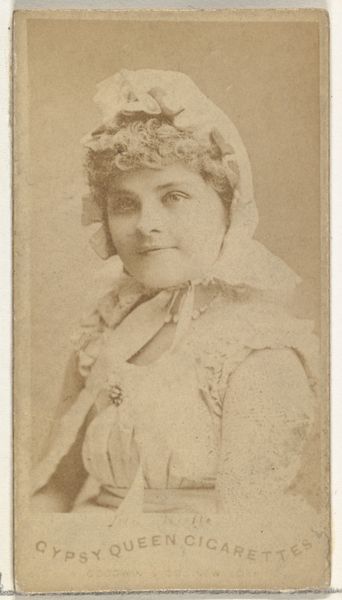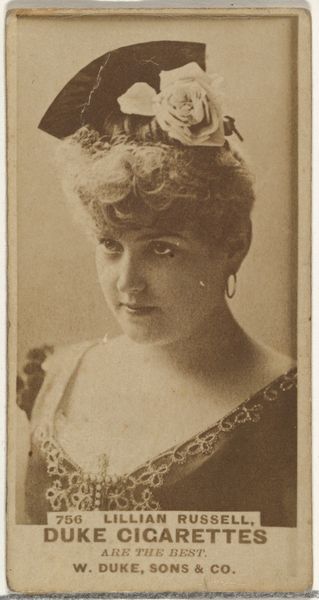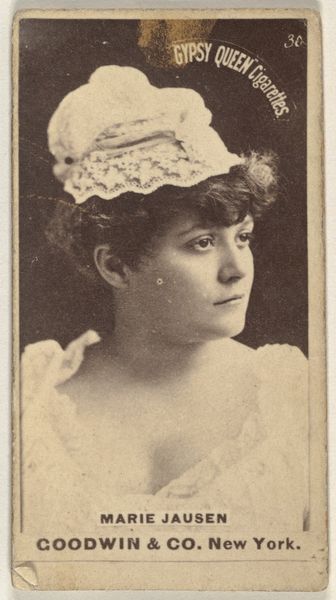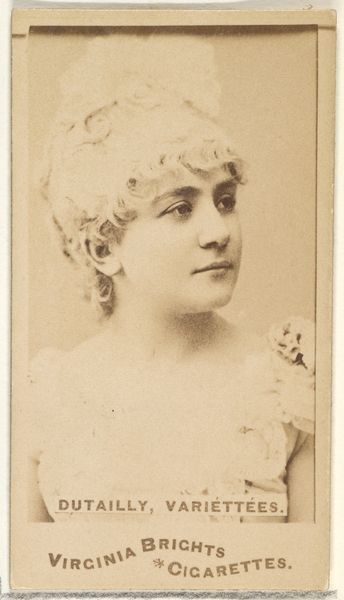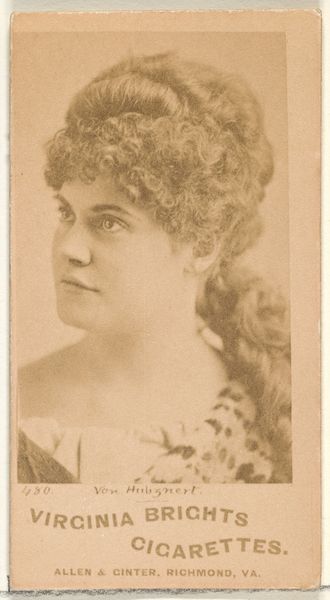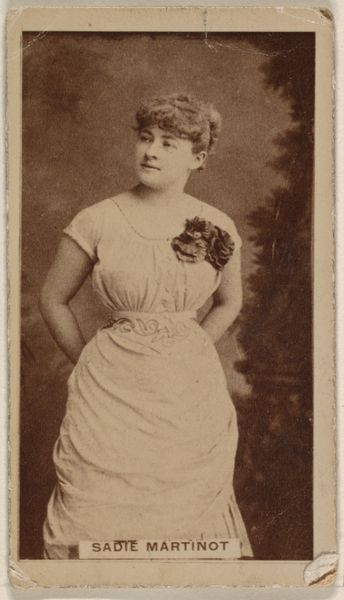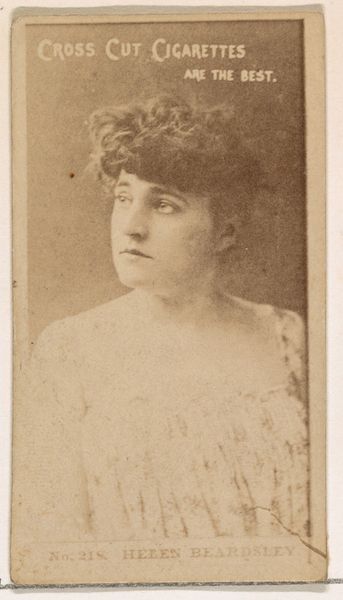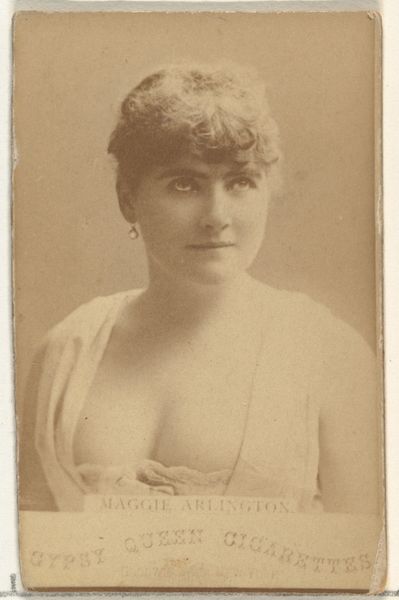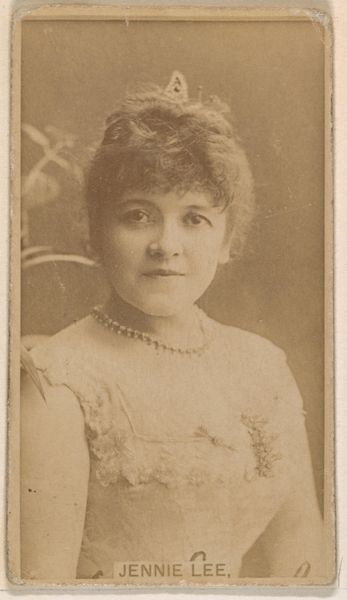
Beaumaine, Varietiees, from the Actors and Actresses series (N45, Type 1) for Virginia Brights Cigarettes 1885 - 1891
0:00
0:00
Dimensions: Sheet: 2 3/4 x 1 3/8 in. (7 x 3.5 cm)
Copyright: Public Domain
Curator: At first glance, there’s something undeniably romantic about this image. The soft focus, the delicate lace…it feels like a faded dream. Editor: Absolutely. And yet, it’s important to recognize this “dream” was manufactured for consumption. This is one of the "Actors and Actresses" series cards, specifically "Beaumaine, Varietiees," produced between 1885 and 1891 for Virginia Brights Cigarettes by Allen & Ginter. The work is a photographic print, now housed at the Metropolitan Museum. We have to ask ourselves, what role does this card play in a larger system of commodification and the construction of celebrity? Curator: It's a fascinating collision. What interests me immediately is how the image is made: the way that photograph is translated into mass media for purposes of advertising. Think about the choice of paper, the inks, the printing press itself—these are all materials imbued with a certain kind of cultural and economic force. Editor: Precisely. The very act of circulating these cards—inserted in cigarette packs no less—normalized not just smoking but also a particular image of idealized femininity. It links a performer, Beaumaine, with an addictive substance and positions both as desirable objects of consumption. What sort of control did Beaumaine have over the use of her likeness in these promotions, if any? Curator: And looking at that lace trimming, the delicate headdress... each component was constructed under certain material conditions: fibers cultivated, woven, dyed, assembled, by anonymous workers, each stage representing a confluence of skill and industry. The very fact of a "Varietiees" performer implies the economics of stagecraft and the industrialization of entertainment, itself. Editor: Exactly! This piece performs a sleight of hand, masking the labor and social relations behind beauty and entertainment. Consider, for instance, that the Gilded Age was an era marked by stark inequality and increasing tensions. Consumption items like this acted as an aspiration that was unattainable for much of society. This conflation created all sorts of issues for disenfranchised communities and workers. Curator: Yes. Seeing it from that vantage point certainly alters the perception of what initially felt 'dreamy'. I think unpacking such layers really helps appreciate the historical forces—material, economic, and social—that were in play to produce, circulate, and then consume this seemingly simple portrait. Editor: It highlights how seemingly innocuous objects can reflect complex power dynamics, too. It pushes us to think critically about representation, commodification, and the often invisible labor behind images and commodities.
Comments
No comments
Be the first to comment and join the conversation on the ultimate creative platform.
